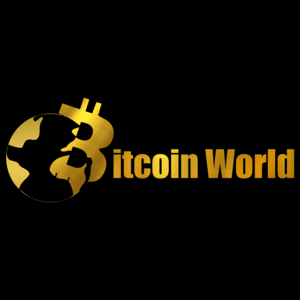Morgan Stanley Crypto Executive Launches Bold New Investment Firm in Switzerland
6 min read
Big news is shaking up the intersection of traditional finance (TradFi) and the burgeoning world of digital assets. A significant move from within the ranks of a global banking giant signals the continued, perhaps accelerating, shift of top-tier talent towards the crypto space. Andrew Peel, who previously led digital asset markets at Morgan Stanley, has made the leap to establish his own venture in Switzerland, specifically focusing on building bridges between the old and new financial worlds. This departure from Morgan Stanley crypto operations highlights a growing trend: experienced professionals from established financial institutions are increasingly seeing opportunities to innovate and build within the decentralized ecosystem. Andrew Peel’s Bold Leap: From Morgan Stanley Crypto to a Swiss Crypto Investment Firm Andrew Peel’s decision to leave his prominent role at Morgan Stanley is more than just a career change; it’s a statement about where he sees the future of finance heading. His new company, based in the crypto-friendly hub of Zug, Switzerland, is reportedly focused on key areas poised for significant growth: tokenized funds and trading tools designed to connect traditional finance infrastructure with decentralized finance (DeFi) protocols. This focus on a crypto investment firm structure suggests an intent to not just observe but actively participate in and shape the institutional adoption of digital assets. Peel’s background at a major institution like Morgan Stanley gives him unique insights into the needs, challenges, and opportunities for bringing large-scale capital and complex financial products into the digital asset space. His move underscores the increasing viability and attractiveness of the crypto sector as a place for seasoned finance professionals to build innovative businesses. Building the Essential TradFi DeFi Bridge One of the most exciting, and perhaps necessary, developments for widespread institutional adoption of digital assets is the creation of robust and secure connections between TradFi and DeFi. Peel’s new firm aims squarely at this challenge, focusing on tools that facilitate a seamless TradFi DeFi bridge . What does this bridge entail? Interoperability: Allowing assets and data to flow securely and efficiently between traditional financial systems (like banks, brokers, exchanges) and decentralized networks (like Ethereum, Solana, etc.). Compliance Layers: Integrating necessary regulatory and compliance frameworks (KYC/AML) into decentralized applications and processes to meet institutional requirements. Product Innovation: Creating new financial products, such as tokenized versions of traditional assets or regulated access points to DeFi yield strategies. Infrastructure Development: Building the underlying technology and protocols that support these interactions, ensuring security, scalability, and reliability. This bridging work is crucial because while DeFi offers innovation, efficiency, and transparency, TradFi provides scale, regulatory clarity (in its own domain), and established investor trust. A successful TradFi DeFi bridge can unlock immense liquidity and bring new levels of efficiency to global markets. The Promise and Potential of Tokenized Assets A core focus for Peel’s new venture is tokenized assets . This concept involves representing ownership or rights to real-world assets (like real estate, stocks, bonds, commodities, art, or even intellectual property) as digital tokens on a blockchain. Why is this significant? Increased Liquidity: Traditionally illiquid assets can be fractionalized and traded more easily on digital markets. Improved Efficiency: Transactions can be faster and cheaper by removing intermediaries and automating processes via smart contracts. Greater Accessibility: Fractional ownership allows smaller investors to access high-value assets previously out of reach. Enhanced Transparency: Ownership history and transactions are recorded on a public or permissioned ledger, increasing trust and auditability. Automated Management: Corporate actions, dividend distribution, or royalty payments can potentially be automated using smart contracts. Imagine owning a token representing a share in a piece of prime real estate, or trading tokens backed by a portfolio of corporate bonds. Tokenized assets have the potential to revolutionize capital markets, making them more democratic, efficient, and global. Peel’s focus suggests a belief that institutions will increasingly leverage this technology for asset management and trading. Zug, Switzerland: A Premier Hub for Institutional Crypto Firms The choice of Zug, Switzerland, as the base for Peel’s new company is no accident. Known globally as “Crypto Valley,” Zug has cultivated a reputation as a leading jurisdiction for blockchain and crypto companies. Its attractiveness stems from several factors: Progressive Regulation: Switzerland has taken a proactive and clear approach to regulating blockchain and digital assets, providing legal certainty for businesses operating in the space. Supportive Ecosystem: The region boasts a concentration of blockchain startups, service providers, academic institutions, and government support, fostering innovation and collaboration. Talent Pool: A growing number of skilled professionals with expertise in both finance and technology are based in or attracted to the area. Global Connectivity: Switzerland’s position in Europe and its reputation as a financial center make it an ideal location for a globally focused crypto investment firm . Establishing a firm in Zug positions it within a respected and well-regulated environment, which is crucial for attracting institutional clients and partners looking for compliance and stability in the volatile crypto market. The Accelerating Trend of Institutional Crypto Adoption Andrew Peel’s move is part of a larger, undeniable trend: the increasing involvement of large financial institutions in the crypto space. While initial institutional interest was cautious, focusing primarily on Bitcoin custody or futures, it has rapidly expanded. Today, we see institutions exploring: Direct investments in cryptocurrencies and digital asset funds. Offering crypto trading and brokerage services to clients. Developing blockchain infrastructure for internal processes. Exploring tokenization for various asset classes. Engaging with DeFi protocols for yield generation or lending (albeit often through regulated intermediaries). This growing institutional crypto adoption is driven by several factors, including client demand, the potential for new revenue streams, diversification benefits, and the recognition of blockchain technology’s long-term potential to reshape financial markets. The movement of senior executives like Peel from firms like Morgan Stanley to build native crypto businesses is a strong indicator of the industry’s maturation and future direction. What Does This Institutional Shift Mean for the Market? The influx of institutional players brings both opportunities and challenges. On the one hand, it can lead to increased liquidity, greater market efficiency, enhanced credibility for the asset class, and significant capital inflow. On the other hand, it may also bring increased regulatory scrutiny and potentially centralize aspects of a historically decentralized market. Challenges and Opportunities in Bridging TradFi and DeFi While the potential of a TradFi DeFi bridge is vast, significant hurdles remain. Regulatory clarity is still evolving across different jurisdictions, creating uncertainty. Interoperability between disparate blockchain networks and legacy TradFi systems is technically complex. Security risks associated with smart contracts and digital asset custody require sophisticated solutions. Despite these challenges, the opportunities for innovation in creating new financial products, improving market infrastructure, and expanding access to capital are immense. Firms like the one Peel is launching are at the forefront of tackling these issues. Actionable Insights for Navigating the Evolving Landscape For investors, builders, and participants in both TradFi and DeFi, Andrew Peel’s move and the broader trend of institutional crypto adoption offer key takeaways: Stay Informed: The convergence of TradFi and DeFi is a complex and fast-moving area. Understanding the technical, regulatory, and market developments is crucial. Evaluate New Products: Keep an eye on regulated offerings related to tokenized assets and institutional access to DeFi yield, but exercise due diligence. Understand the Infrastructure: Pay attention to the development of the TradFi DeFi bridge technology, as this infrastructure will underpin future market growth. Recognize Talent Flow: The migration of top TradFi talent into crypto is a bullish signal for the industry’s potential and increasing sophistication. Consider Regulatory Trends: Regulatory developments, particularly in jurisdictions like Switzerland, will significantly impact how institutions engage with digital assets. This period represents a critical phase in the evolution of global finance, where the strengths of traditional systems are being integrated with the innovation of decentralized technology. Conclusion: A New Era for Institutional Digital Assets Andrew Peel’s departure from Morgan Stanley to launch a crypto investment firm in Switzerland focused on tokenized assets and the TradFi DeFi bridge is a powerful symbol of the ongoing institutional embrace of digital assets. It signifies not just interest, but a commitment from experienced finance professionals to build the necessary infrastructure and products for a future where traditional and decentralized finance are seamlessly connected. As more talent flows from Wall Street to “Crypto Valley” and other digital asset hubs, the foundations for widespread institutional crypto adoption are being laid, promising a transformed financial landscape. To learn more about the latest crypto market trends, explore our articles on key developments shaping institutional adoption and the future of tokenized assets.

Source: Bitcoin World



